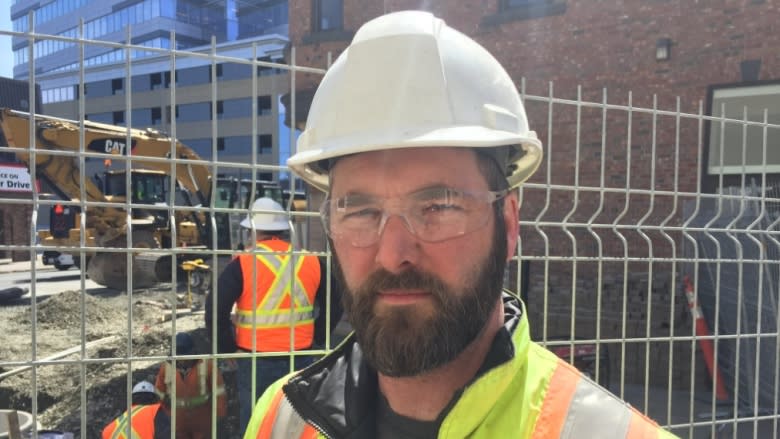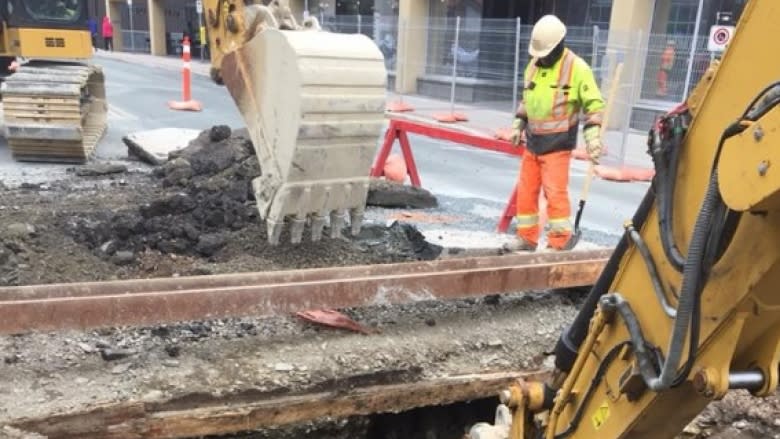As St. John's streets are ripped up, archeologist keeps an eye on what lies beneath
With City of St. John's crews digging into downtown streets to upgrade decades-old water and sewer infrastructure, archeological monitor Blair Temple is keeping an eye on things.
Temple, of Gerald Penney Associates, is there is to identify any historic resources found during excavation for the multi-year project, currently working on Queen and Water streets.
"You keep an eye on anything that gets exposed. In a lot of cases, some of the material, be it structural walls or whatever the case may be, it does have to be removed during the course of the water and sewer installations," he told CBC Radio's St. John's Morning Show.
"So my job is, if something is exposed, is to identify it and record it before that happens, so at least we have a record."
Temple said he expects to see old wall stone foundations, old infrastructure — even artifacts from the early fishery. So far, though, it's been mostly old sewers.
"We found small fragments of the original stone sewers that were constructed mainly in the 1850s. We found pieces of brick catch basins, which are contemporary with the brick interceptor sewer that was built in 1889," he said.
The workers who laid that infrastructure didn't have the equipment — like excavators — that today's crews do. It was pick and shovel.
Pieces found nearby from 17th century
"They just dug trenches, and they had really skilled brick masons here in St. John's to do the work," he said.
Especially in areas hit by the Great Fire of 1892, and in spots where the street alignment has been changed, it's common to find pieces of former structures, said Temple, noting that items dating from around 1665 were found in 1995 where the parking lot for the nearby Murray Premises hotel is located.
"We're not too far from that so there is a possibility that we'll find something related to that," he said.
"We did find a lot of artifacts, and it was probably related to a planter, a fishing planter, probably somebody of high status. A lot of the material culture that was found is the type of things that you'd normally find on people that were a little bit higher of an economic standing."



